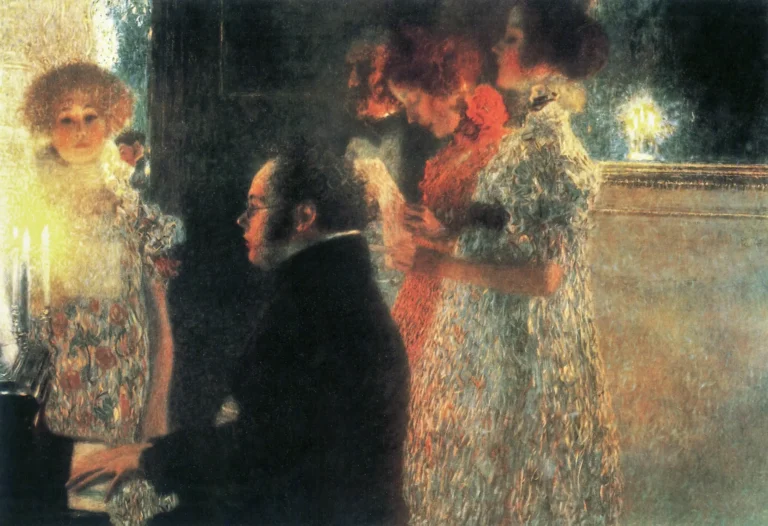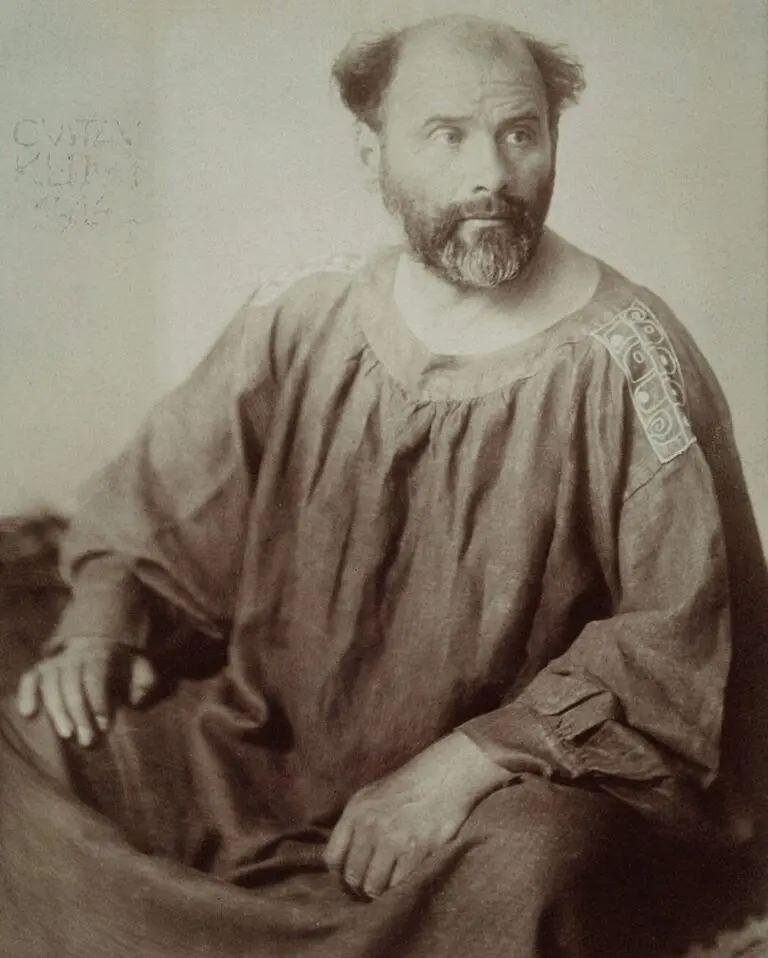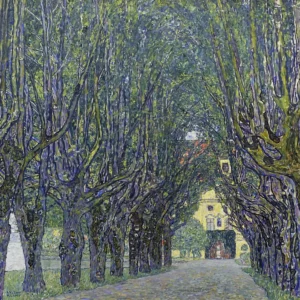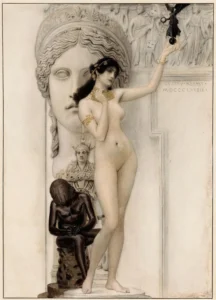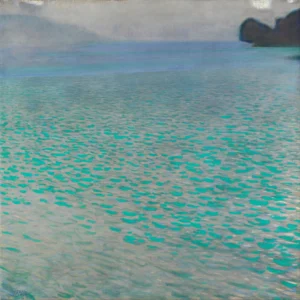Schubert at the Piano II (1899)
In Schubert at the Piano II, Gustav Klimt presents the iconic composer Franz Schubert seated at the piano, enveloped by elegantly dressed women of his era. Commissioned by Nikolaus Dumba for his luxurious Vienna apartment, this artwork blends the contemporary with the historical, showcasing Klimt's distinctive style characterized by ethereal light and deliberate ambiguity. The piece is a testament to the intimate relationship between music and art in early 20th-century Vienna, even though its original form has been lost to time.
Year 1899
About the Artwork
Did You Know
Liked what you see? Add it to your collection.
Enjoyed reading? Share it.
... continued
The artwork Schubert at the Piano II by Gustav Klimt, created in 1899, is a significant piece that reflects the artist's innovative and stylistic approaches.
Commission and Context
The painting was commissioned by Nikolaus Dumba, a Greek industrialist, as part of a project to decorate his luxury apartment in Vienna. Klimt was tasked with creating two paintings for the music room, and Schubert at the Piano II was one of these works.
Subject and Style
The painting depicts Franz Schubert, the renowned Austrian composer, at the piano, surrounded by women. Notably, Klimt did not adhere to historical accuracy in the clothing of the onlookers; instead, the women are dressed in contemporary attire of Klimt's time. This choice highlights Klimt's departure from traditional historical representation.
Technique and Lighting
Klimt's use of light was a central element in the painting. The subtle lighting, often achieved through candlelight, helps to dissolve the elements in the picture, creating a dreamlike atmosphere. The focus is primarily on Schubert's profile, while the other figures are less sharply defined.
Destruction
Unfortunately, the original painting was destroyed in a fire at Schloss Immendorf in 1945, during the final days of World War II. However, studies and drafts for the painting have been preserved and are now part of various collections, including the Albertina Museum.
Studies and Preparations
Klimt created several studies and drafts for Schubert at the Piano II. which are characterized by his use of pointillist style and emphasis on chiaroscuro. These studies, such as "Two Standing Girls, Holding Sheets in Their Hands," showcase Klimt's linear drawing style and his ability to capture the mood and essence of his figures through purely linear means.





